Review: ‘Kinesthesia’ exhibit in Palm Springs spotlights kinetic art in breathtaking new dimensions

Complex art or clever gimmick? The choice, fair or not, has stuck to the genre of kinetic art for more than half a century.
Artists like Alexander Calder and Marcel Duchamp stand at one end of the very wide kinetic spectrum. Calder’s carefully balanced mobiles floating on gentle breezes and the whirling, carnival-style prestidigitation of Duchamp’s optical Rotoreliefs bear scant resemblance to each other. Yet, both are secure in the Modernist pantheon.
At the other end of the kinetic art gamut stands a host of rather more iffy artists, who have made assorted things that bang, clang, blink, spin, shimmy and shake. Amusing gizmos, these works can make you smile. Finally, though, they don’t prompt much in the way of meaningful contemplation.
At the Palm Springs Art Museum, an exhibition of more than 50 kinetic works by nine South American artists who emerged during the genre’s heyday in the 1950s and ’60s lands more in the complex category than in the amusing gizmo domain. History is weeding out the gimmicks, putting the old category question to rest.
One artist — Venezuelan Carlos Cruz-Diez, 94 — ranks as a major figure.
Another — Gyula Kosice (1924-2016), a Hungarian expatriate to Argentina — is a marvelous, largely self-taught eccentric whose futuristic fantasy sculptures are an unexpected pleasure.
In between are figures with established international reputations, such as Julio Le Parc, who “paints” shifting phantasms of reflected light, and Jesús Rafael Soto (1923-2005), whose acutely refined geometric abstractions probe habits of perception. Among notable but lesser-known artists are the Argentine couple Martha Boto (1925-2004) and Gregorio Vardanega (1923-2007), who experimented with optical light boxes, singly and together, to varied effect.
“Kinesthesia: Latin American Kinetic Art, 1954-1969” assembles two general kinds of work. One is art that physically moves — or, optically, appears to, such as in Vardanega’s ever-changing patterns of blinking light bulbs. The other is art that essentially stands still, but to be fully seen — fully experienced — requires that the viewer move.
Cruz-Diez’s work is of the latter type. “Chromosaturation” is a breathtaking 1965 installation that the artist adapted to the museum’s available space. (A different version was shown in Los Angeles seven years ago at the Museum of Contemporary Art.) The floor, walls and ceiling in three cube-like adjacent chambers are pure white. These architectural containers form a spatial “canvas” illuminated from above by square fixtures of thin fluorescent tubes in green, red and blue, the primary colors of light.
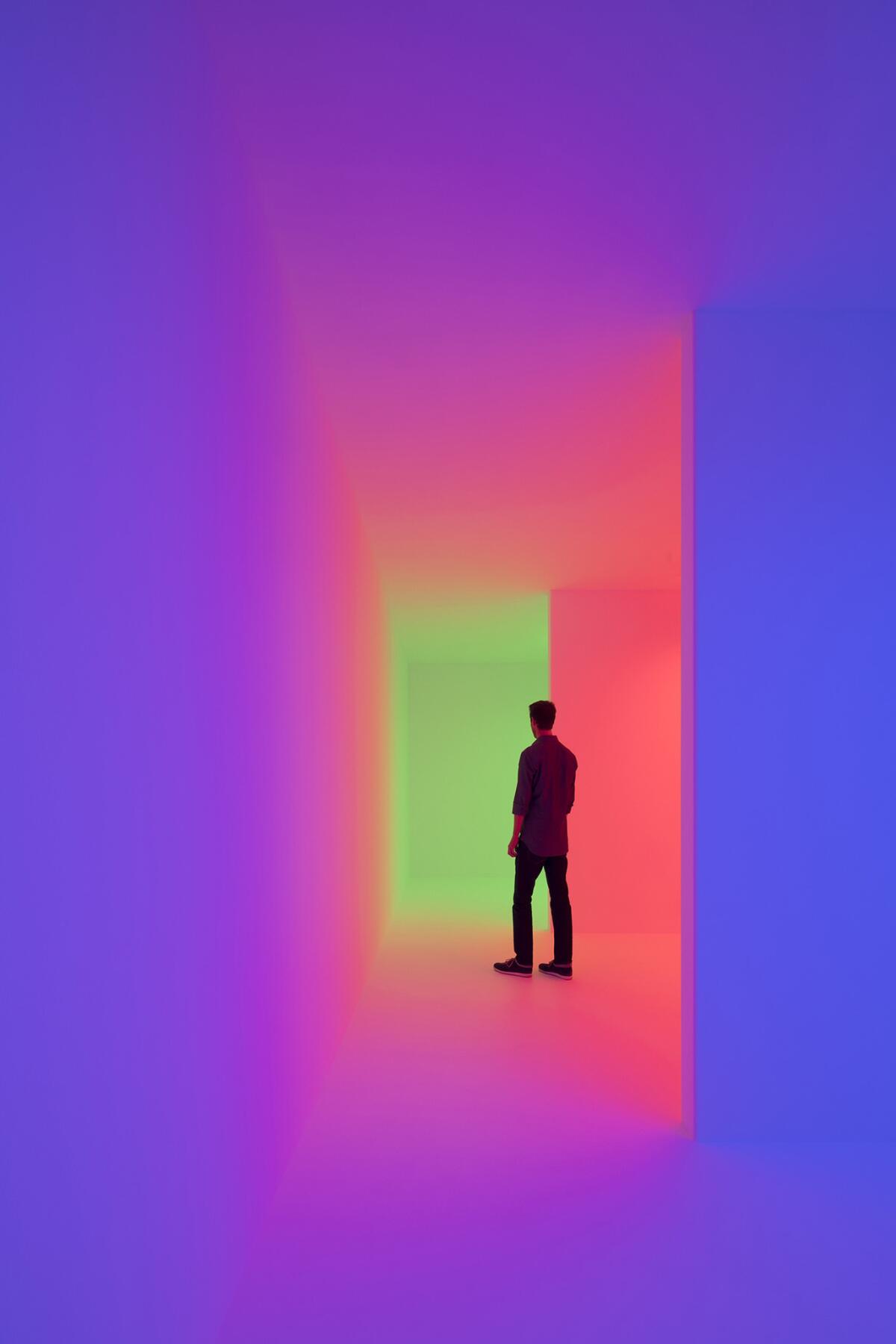
Move through and between the spaces and the saturation of atmospheric color intensifies and fuses. The rods and cones in your eyes, overwhelmed, struggle to adjust. As they do, colors overlap and merge through reflection. Spatial zones of transparent violet, orange and other rainbow hues surprise expectations and complicate internalized perceptions.
Cruz-Diez manipulates volumes of colored space rather than colored shapes and forms, which one finds in abstract paintings and sculptures. Working backward, he also adapts the environmental phenomenon to a marvelous group of paintings on sculptural, accordion-pleated surfaces. Two- and three-dimensional squares of color vaporize into luminous veils as you move by his painted reliefs, adding the fourth dimension of time.
Cruz-Diez’s work, pertinent to so much participatory art being newly made today, feels fresh. Partly that’s because it gives the lie to many current assumptions about the supposed limitations of painting and sculpture. And partly it’s because his installations internationalize the L.A.-based dynamics of Light and Space art in the 1960s by artists such as Robert Irwin and Doug Wheeler.
Kosice, who was born Ferdinand Fallik but chose to be named for the city of his birth by the Hungarian-Slovakian border, was a founder of Buenos Aires’ post-World War II Madi Group. Up from the bitter ashes of Holocaust and Hiroshima emerged a future-oriented spirit of creative play. The acronym Madi championed an art of movement, abstraction, dimension and invention.
Seemingly out of left field, Kosice worked on his wild “Hydrospatial City” installation for 26 years, starting in 1946. Twenty suspended architectural constructions in clear acrylic are like topsy-turvy space stations hovering in fluid darkness. (Look closely and you’ll find tiny figures on board: Beam them up!) Some forms suggest jellyfish, anemones and other undersea creatures, occupants of another exotic fluid world. Sparkly pin-points of light in seven illuminated wall-reliefs that ring the large room create a glittering intergalactic environment — or, perhaps, portholes beneath a mysterious sea.

The “Hydrospatial City” — hydro because the Earth is, in fact, mostly water — is a homemade version of a kid’s model train set exploded to visionary scale. The plastic ensemble may put you in mind of transparent sculptures by fellow ethnic Hungarian artist László Moholy-Nagy. Appropriately enough for Palm Springs, it even recalls Lucite furniture designs by Charles Hollis Jones, period purveyor to Frank Sinatra, Arthur Elrod, Tennessee Williams and John Lautner.
“Kinesthesia” was organized by guest curator Dan Cameron. The dates under review — 1954 to 1969 — constitute a quiet polemic.
The history of kinetic art is usually traced to 1955, which is the year that Hungarian Op artist Victor Vasarely and Paris art dealer Denise René organized the exhibition “Le Mouvement” at her Right Bank gallery off the Champs-Élysées. (Soto, along with Calder and Duchamp, was among the artists included.) The title was a sly pun: “Le Mouvement” announced that kinetic art — an art of movement — was itself a full-blown artistic movement.
The Palm Springs survey acknowledges the influence of that landmark show, but it begins a year earlier to underscore that numerous South American artists were already working in kinetic modes. Their avant-garde bona fides get burnished.
That virtually all the artists went to France in the 1950s, some deciding to stay permanently, was a double whammy. The artists found a generally supportive milieu; but, art historically, the postwar School of Paris languished in the engulfing shadow of the ascendant New York School. Choosing to work in Paris, scene of yesterday’s glory ride, didn’t help South American Modernism, which already didn’t get much international notice.
PST: LA/LA: All our articles on Pacific Standard Time »
The show’s 1969 closing date, however, unhinges the art from Paris. The tumultuous 1968 student revolt was a decisive marker in the cultural life of France. The South American artists carried on, both in Europe and at home.
To some extent, “Kinesthesia” is a perhaps futile attempt at rebranding. The word signals just how tainted the established term, kinetic art, now demoted to subtitle status, has long been. But the bodily and muscular sensation that is the actual province of the science of kinesthesia doesn’t really have much to do with this art. Perceptual experience, of which kinesthesia is just one part, is thornier and more multifaceted.
This exhibition, a project of the Pacific Standard Time: LA/LA initiative underway at art museums all over Southern California, will surely help reconsiderations of the genre. It’s long on complexity and short on gimmicks. Kosice’s declared artistic philosophy took up a single word — joy — and the sentiment might speak for all nine artists.
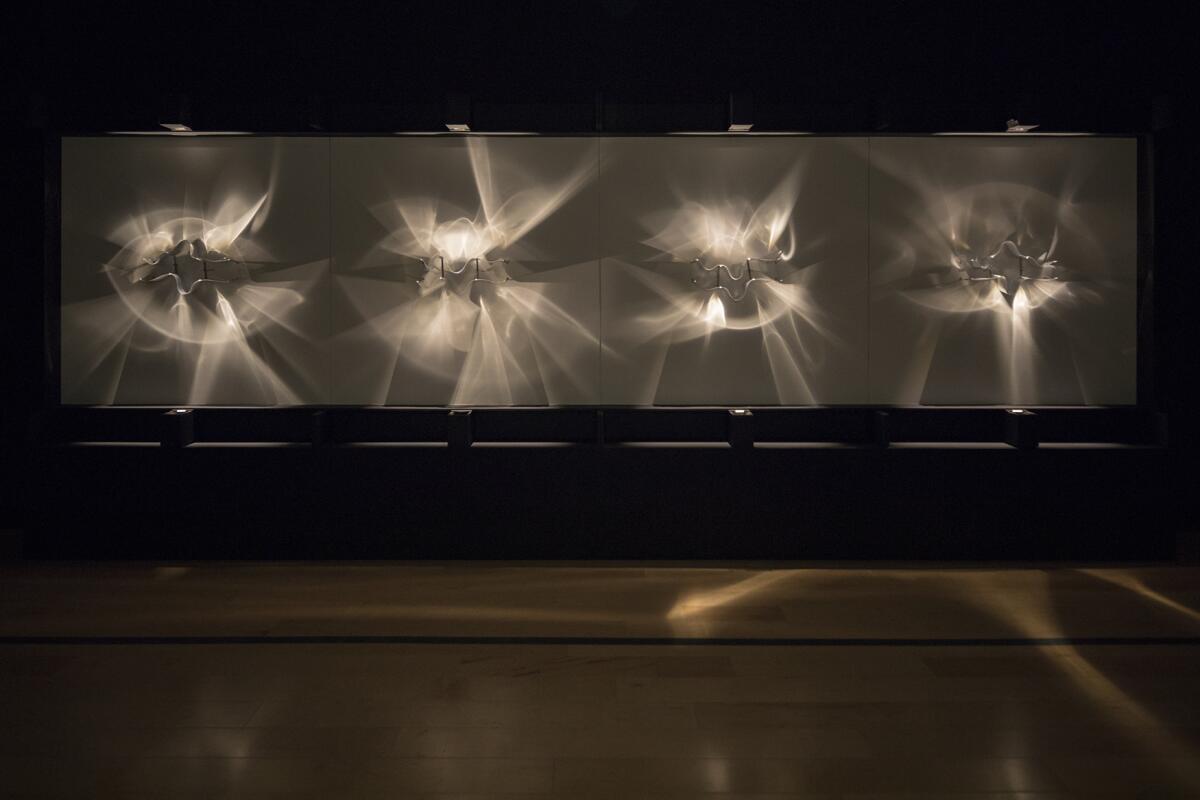
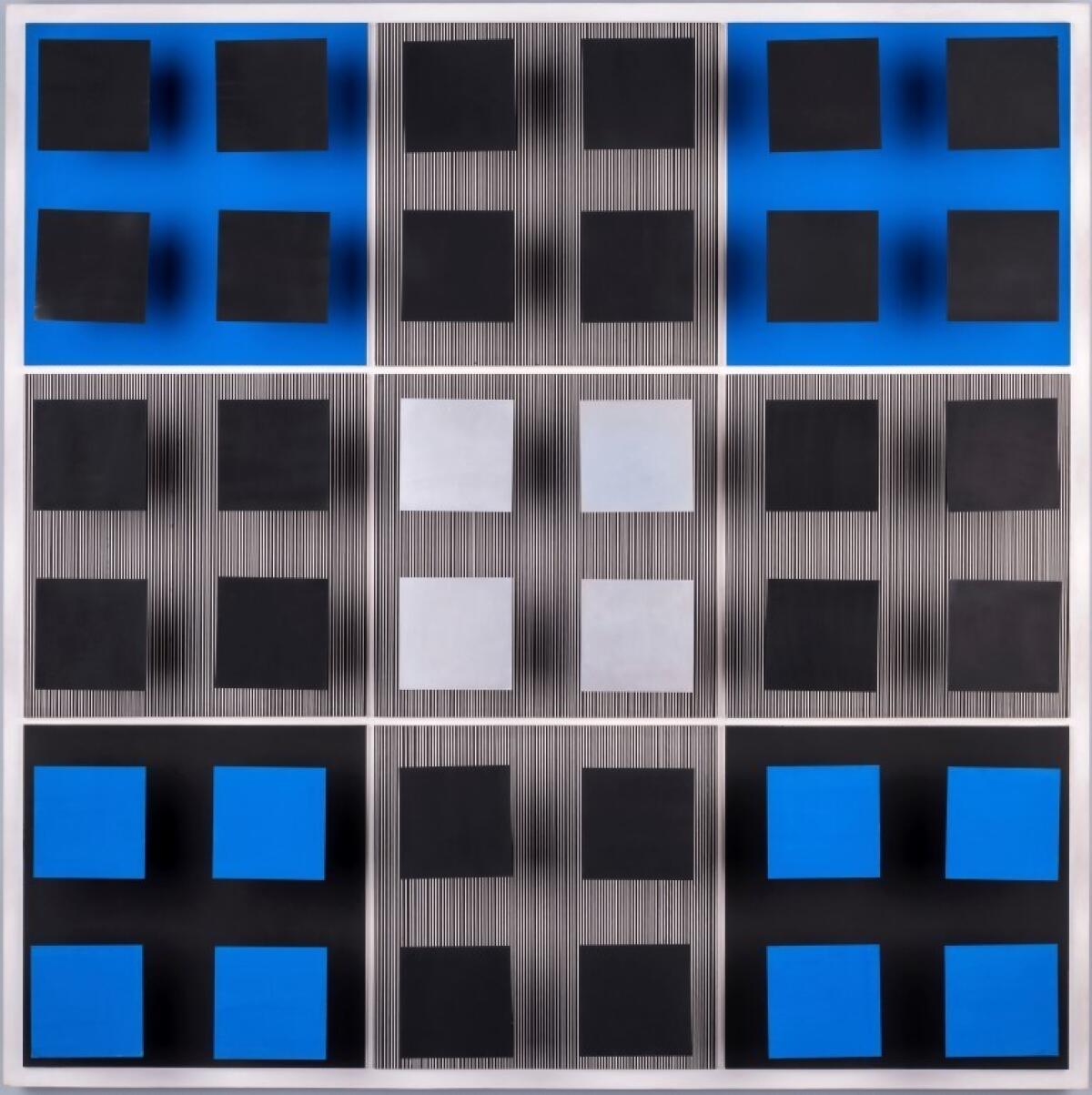
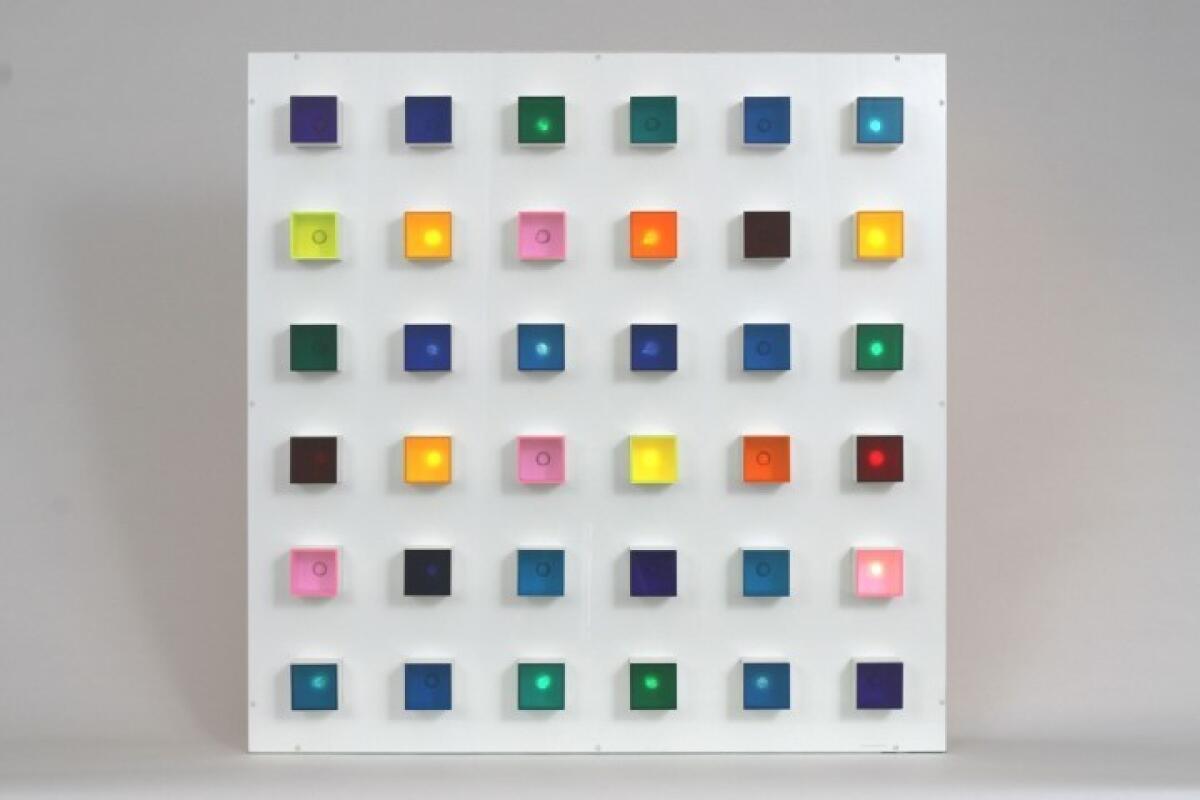
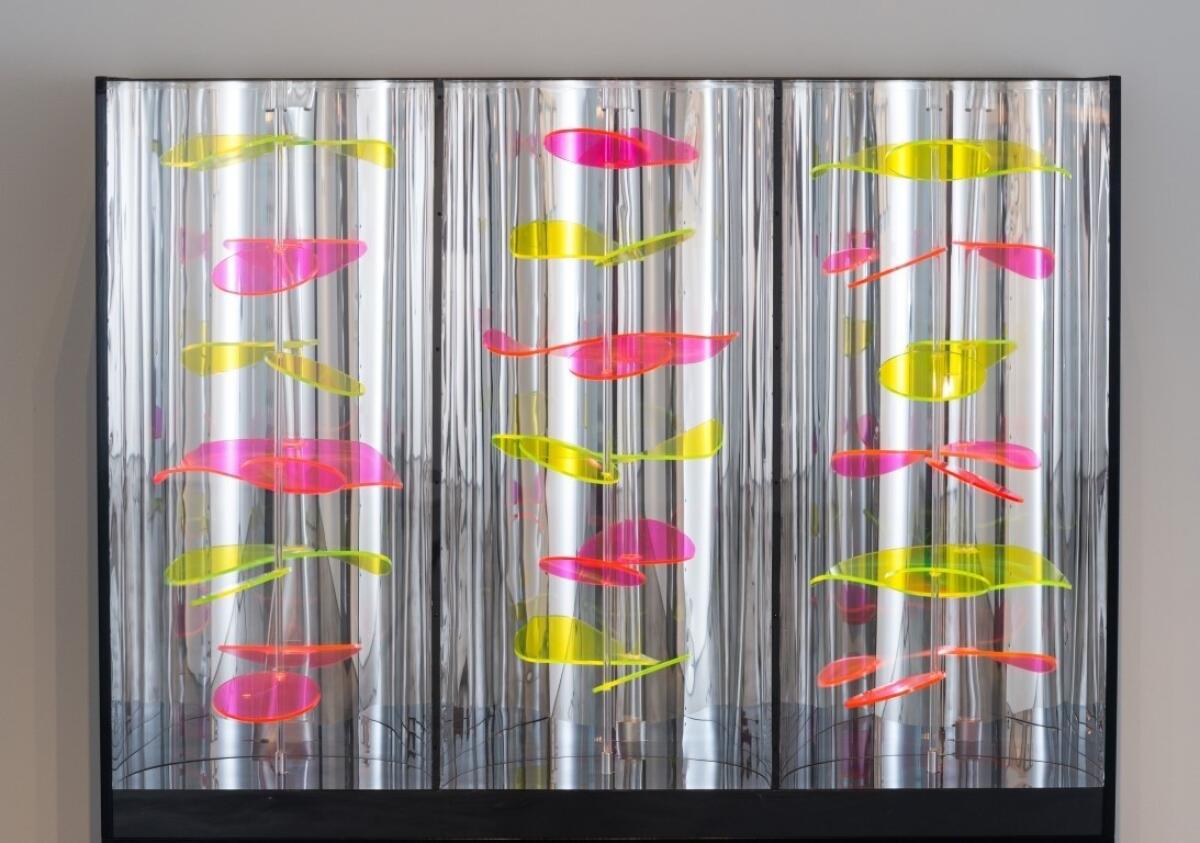
♦ ♦ ♦ ♦ ♦ ♦ ♦ ♦ ♦ ♦
‘Kinesthesia: Latin American Kinetic Art, 1954-1969’
Where: Palm Springs Art Museum, 101 Museum Drive
When: Through Jan. 15; closed Wednesday
Info: (760) 322-4800, www.psmuseum.org
christopher.knight@latimes.com
Twitter: @KnightLAT
MORE ART NEWS AND REVIEWS:
Artist Carlos Cruz-Diez's street installation at the Broad
Oaxacalifornia dreaming: L.A. library mural project
The remarkable drawings of Martín Ramírez at DTLA's new museum
The biggest entertainment stories
Get our big stories about Hollywood, film, television, music, arts, culture and more right in your inbox as soon as they publish.
You may occasionally receive promotional content from the Los Angeles Times.




